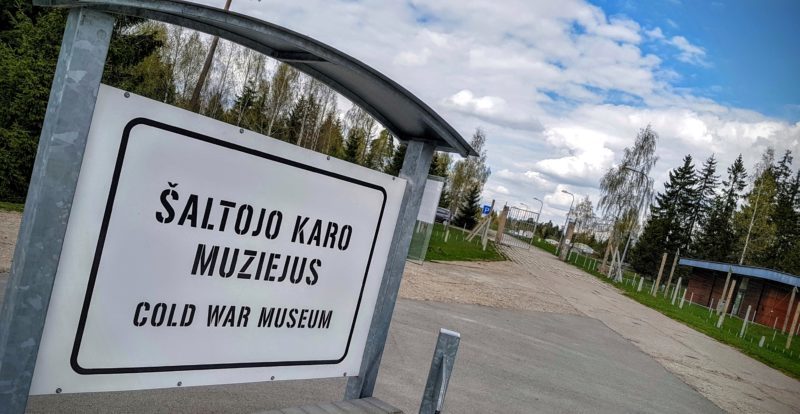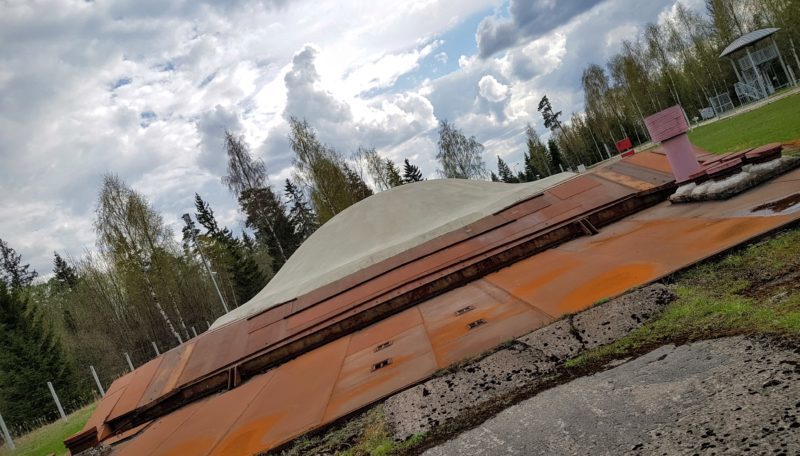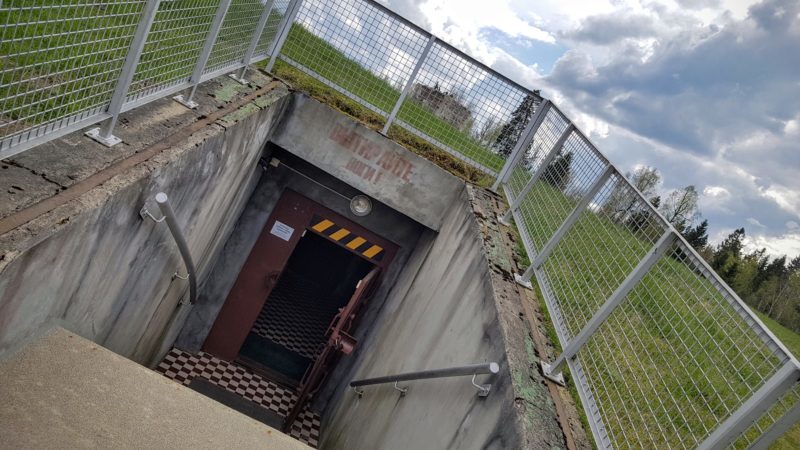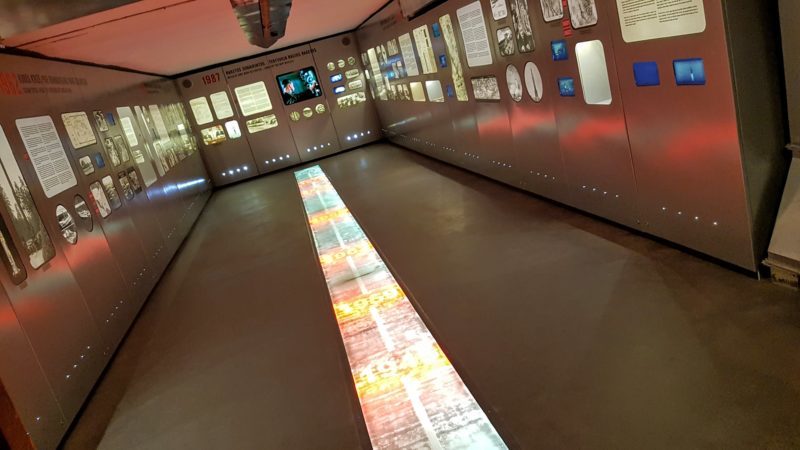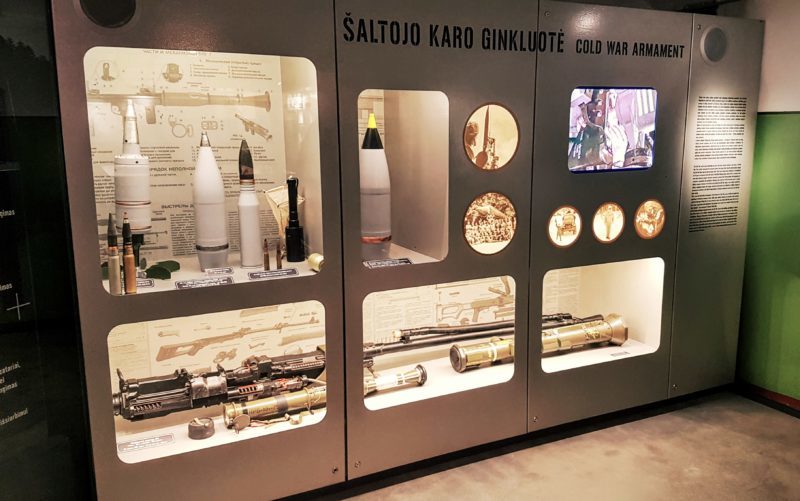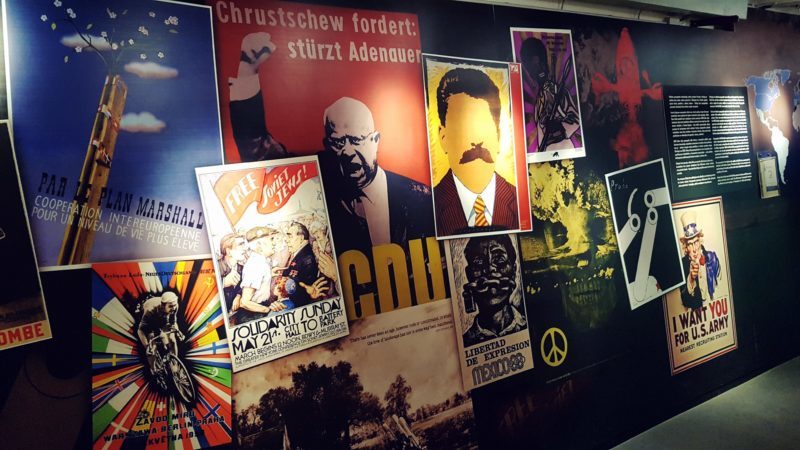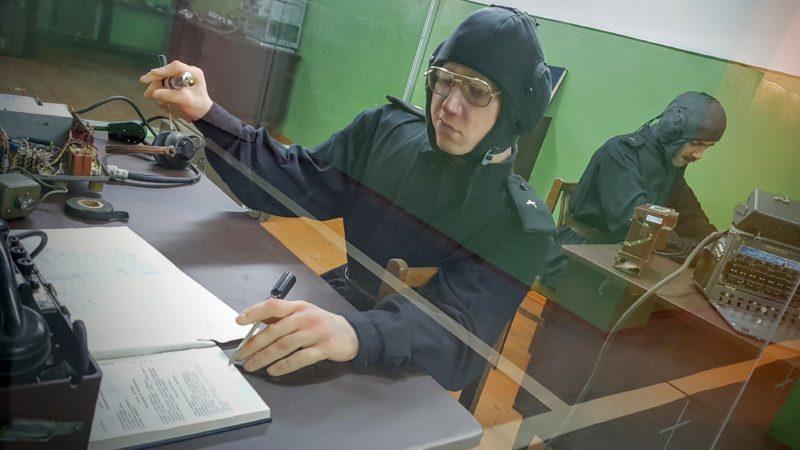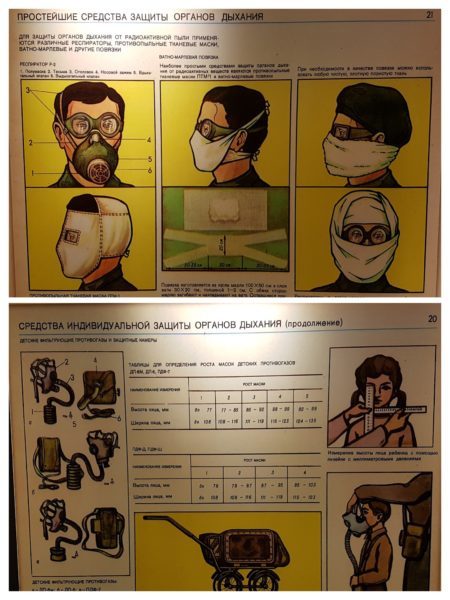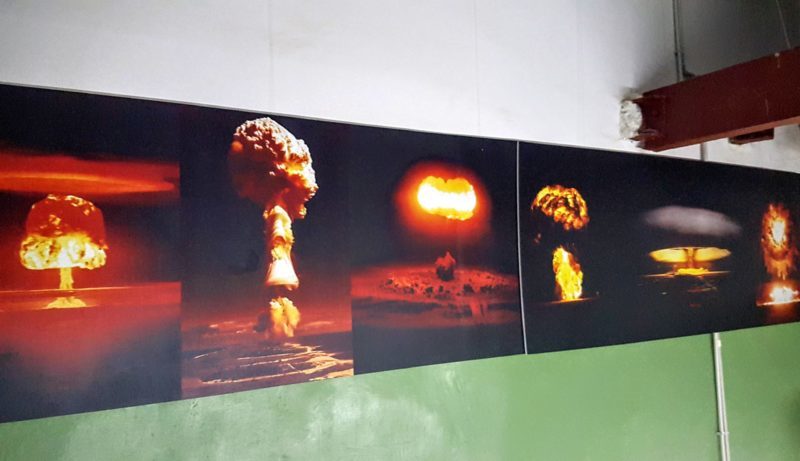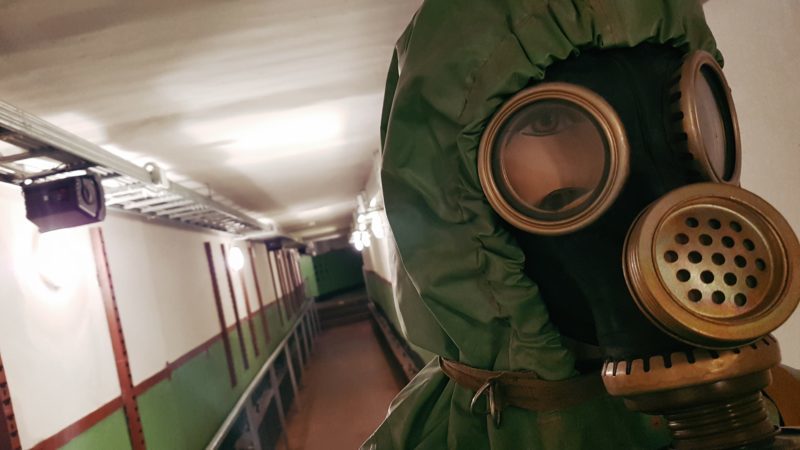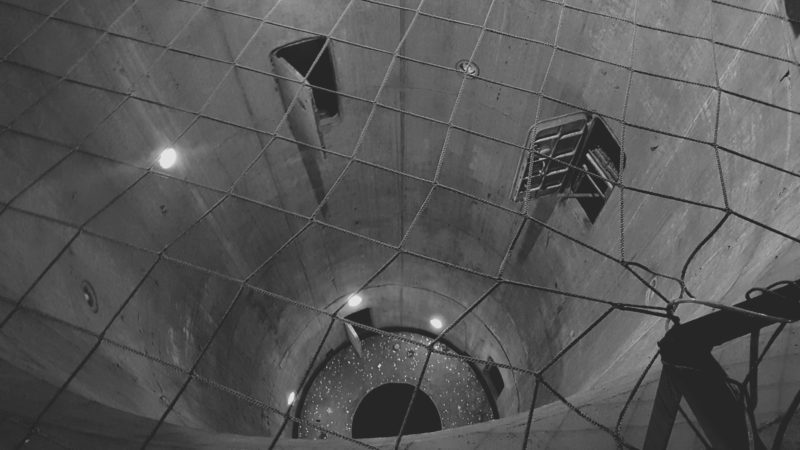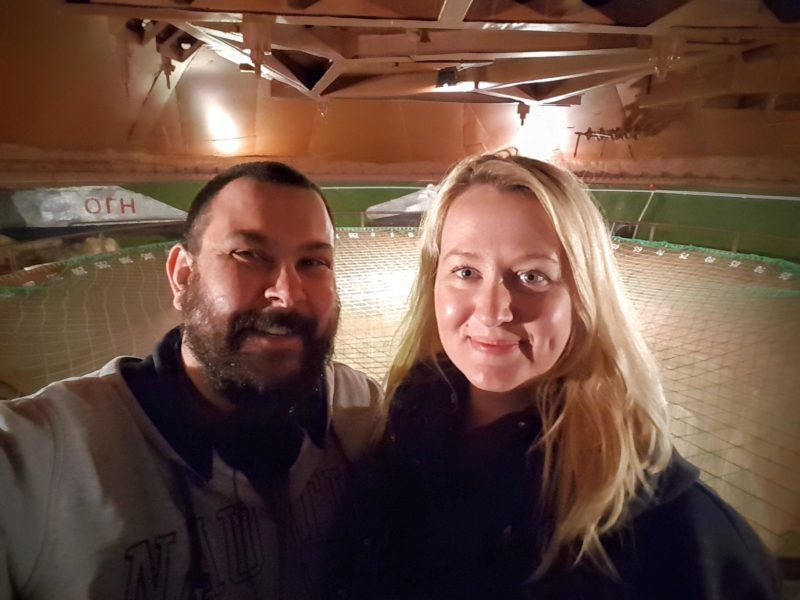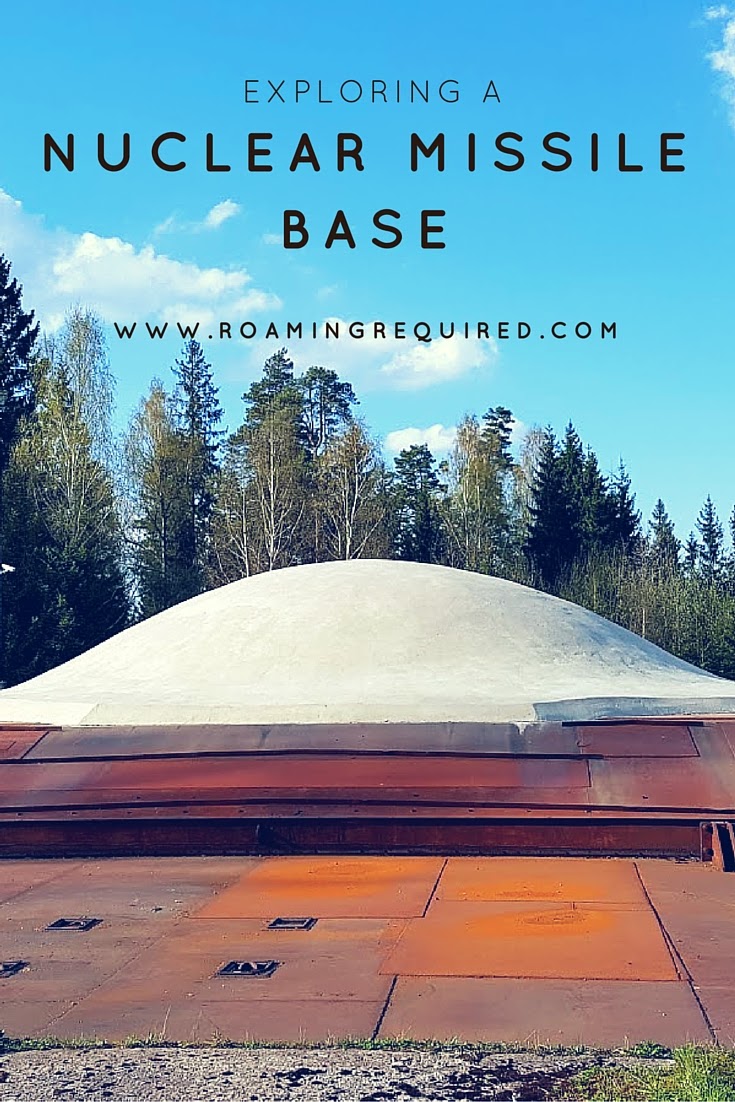Last updated: 25 June 2023
Have you heard of Zemaitijos National Park in Lithuania?
Zemaitijos National Park is located just three hours from Vilnius, not far from the Latvian border. It’s a lush and beautiful parkland dotted with towering trees which surround the serene and calming waters of Lake Plateliai.
It’s also home to a secret. A Cold War secret. A Soviet Union secret which was kept hidden from the Lithuanian people (and the world) for decades. It’s the site of the former Soviet Union’s first underground nuclear missile silo.
Welcome to the Plokstine Missile Base, now known as the Cold War Museum, located near Plokščiai Village.
At Roaming Required we love to find the weird and wonderful, the offbeat and unique. We often find ourselves steering the car towards the roads less travelled. Which is exactly how we found ourselves visiting the Plokstine Missile Base.
A Little Bit of History
The Plokstine Missile Base was built in 1960 in the Plokščiai area for a number of reasons; it was sparsely populated and out of the way, but most importantly it provided a geographic advantage whereby the missiles had the potential to strike all European targets.
Construction of the four missile silos took 2 years to complete and consisted of 10,000 men, mostly from Estonia who astonishingly dug the 30 metre silos by hand in just 6-8 months. At the same time as they constructing the four missile silos, a command centre compound was created in the middle of the missile base.
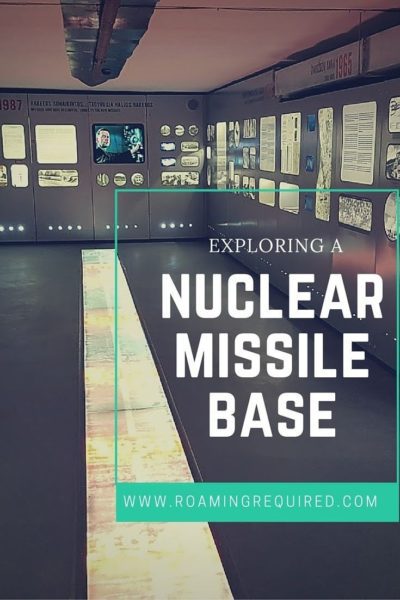
Construction of the missile base was completed on 31 December 1962 at 10pm. The Soviet Union operated the nuclear missile base in complete secrecy until it closed on 18 June 1978.
From 1963 to 1978, there were 4 medium-range R12 ballistic missiles armed with 2 megaton thermonuclear warheads. The missiles stood 23 meters tall, including the 4 meter tall nuclear warhead.
Getting to the Cold War Museum
As you’d expect, the secret nuclear missile base is out of town which definitely requires a car to visit. Following the directions on Google Maps, there was a 5 km stretch of gravel road which required careful navigating. I think we sat on about 20 kph to ensure that we didn’t damage our rental car however judging by the occasional car which flew past us I think I was overly cautious.
There were a few indicators that we’d arrived at our destination – the large building surrounded by 4 sets of barbed wire fences (which we learned used to be electrified at 220 V – and up to 1700 V!) and the big sign displaying Cold War Museum.
When we visited there was ample parking located just outside the front of the museum, one of the benefits of visiting off season. We collected our camera equipment and made our way to the entry. We were greeted warmly by two of the museum staff who advised of the entry prices and if we wanted an audio guide. The audio guide was only an extra €3 and well worth the money as it provided a valuable insight into this fascinating part of history.
If we don’t see you in 2 hours then we’ll come find you to make sure that you didn’t get lost
To some people that might set off alarms bells but to Roma and I, it sounded like an amazing few hours ahead. We have a history of spending hours in museums, longer than we always anticipate, so we gave each other a knowing smile, put on our audio guides, and began our journey through the Cold War Museum.
A Cold War Journey
There was a sense of excitement and, yes, perhaps even anxiousness as we walked from the museum office into the the main section of the Cold War Museum. It was surreal to that we were walking on grounds which were once protected at the highest security levels by the Soviet Union military. Well, that and the fact that we had the whole place to ourselves…
Following the signs, we walked towards a large dull coloured dome, it was rusted orange with a grey top, it looked like something out of the TV show Thunderbirds. I almost expected to see Aloysius Parker appear and ask where Lady Penelope was. As we looked around we noticed that there were 3 other domes, of the exact same size and colour.
Oh. That’s when it hit us.
What we were looking at WERE the missile silo domes! We were literally standing on top of a nuclear missile silo! We were looking at the domes from ground level but on the other side of that dome was a 30m deep silo which once held ballistic missiles armed with a nuclear payload! Yes, a chill did run up and down our spines…
We continued to follow the signs and walk around the dome until we found the main museum entrance. The main museum is located in the former command centre compound, located between the four silos. We looked at each other, took a deep breath, and made our way down the stairs.
Once you’re inside the underground bunker, the tour begins. The museum is well signposted with big red arrows designed to keep you moving in the right direction, when you’re ready to move on, of course.
Interesting fact: Did you know that the nuclear missile silos and underground command centre were reinforced to such an extent that it could withstand a nuclear blast?
The Central Command Room
The first room you enter as you begin the tour is of the former Central Command Room. The room once held four missile control panels which, when the order was to be given, was where the missiles could be launched.
The Central Command room boasts an impressive amount of information about the history of the Cold War, and follows an easy to understand timeline covering the decades from 1945 all the way to 1987. There were excellent exhibits on; the causes of the Cold War, the arms race, and a good deal on the Cuban Missile Crisis – did you know that the Plokstine Missile Base played a role in the Cuban Missile Crisis? The R12 rockets were secretly dispatched by train to Cuba!
As someone who loves history, I found this first room incredibly interesting but be warned, wear comfy shoes because there’s no place to sit down whilst reading and listening to all the detail.
Russell’s Opinion: It’s a really interesting exhibit where you can learn a lot so I recommend taking your time and just try and read as much as you can.
Roma’s Thoughts: Pace yourself. This room can easily take hours to get through, so I sat on the floor for the lengthy audio sets.
Weapons, Weapons, and more Weapons
Once we spent some time learning about the Cold War (and when I say some time, I think it might have been the better part of an hour) then we headed into the weapons room, better known as the armament exhibition.
It’s here in this room where you will find an assortment of weapons, from the AK-47 to a ballistic missile to replicas of nuclear warheads. Yes, the sign definitely said REPLICA! There was also a scale model display of the missile silo and a fascinating detailed description of how the silos were built.
Russell’s Opinion: I know the nuclear warhead was a replica but still unnerving to look at…
Roma’s Thoughts: If you’ve ever played a first person shooter game, some of of these weapons will sound familiar.
The Propaganda Room
Once you’ve finished learning about the history of the Cold War, you move into the next room which is adorned with propaganda posters through the decades. Pro-Soviet Union and Anti-American and vice-versa. It was really interesting.
Russell’s Opinion: So interesting looking at the over the top propaganda posters from both the Soviet and American perspectives
Roma’s Thoughts: Take a seat and appreciate the indoctrination. I’ve never seen a collection quite like this one.
Comms Room
Once you’ve explored the upstairs rooms, you can head deeper into the silo and move down stairs to the communications room. It’s here where the radio officers were kept tethered, literally tethered, to the network to listen for any new messages or commands. What you don’t see in my photo below, is that there is a substantial amount of tethered cable laying on the ground next to the officers? Why? There was no respite even during a bathroom break…
Gas Masks
As you make your way through the various engine and generator rooms in the second level of the museum, you will come across a room containing series of gas masks on display in glass cabinets. Sitting above them, instructions on what to do in the event of a nuclear explosion. The posters were all in Russian but that didn’t matter, they were fascinating to look at. Best described as bizarre, these posters expressed the importance of a rubber gas mask in the event of nuclear war.
Russell’s Opinion: I guess the thinking was some preparation was better than no preparation but I don’t know how helpful a gas mask would be if the worst happened.
Roma’s Thoughts: Say your prayers on the way in. You don’t want the lights to go out with these spooky lifelike dummies around you.
Nuclear War
There is a small room which contains a large screen, a small model of a city, and pictures of nuclear explosions on the wall. Next to the pictures there is a red button…so, of course, I needed to press it.
What happened next was the sound of loud siren and everything turned red. The screen switched on and a series of nuclear explosions (from a variety of filmed nuclear tests over the decades) played on screen. It was a sobering and disturbing moment standing there watching the destructive force of a nuclear weapon unleashed…
The Nuclear Missile Silo
As you walk out of the nuclear war room, you’re met with a large empty corridor and make your way down it. As you begin to walk down the corridor you realise there’s another display mannequin, dressed head to toe in a rubber hazard suit, facing the other direction.
At the end of the corridor I took a few more twists and turns and arrived at the missile silo. There are a couple of information boards providing insight into what was once held in this location. After reading the boards, I began to walk around the confined space until I saw a short ladder leading to a small opening. So climbed up and into it…
And that’s when we realised that we were standing at the top of a 30m tall missile silo, directly underneath the grey dome we saw above ground! I cannot begin to describe the feeling standing there, I think we both struggled to find the words about how surreal this was! We were standing in the Soviet Union’s first secret nuclear missile silo hidden underground in Lithuania!
We stood there and just absorbed the atmosphere and let the history we just learned wash over us…
One of the most interesting museums we’ve ever visited and definitely one that should be on your list when visiting Lithuania as it serves as a stark reminder of the horrific power of nuclear weapons and it’s surreal that the museum is housed in a former missile silo. A must visit.
The Essentials | Exploring a Secret Nuclear Missile Base
- Location: Siline Street 4, Ploksciai, Plunge dstr (Google Maps will get you there)
- Opening Times: Dependant on time of year
- Cost: €4 (Oct-Apr) & €5 (May-Sept) (correct at time of visit)
- Audio Guide: €3

